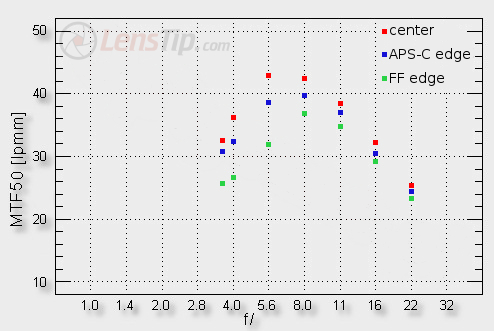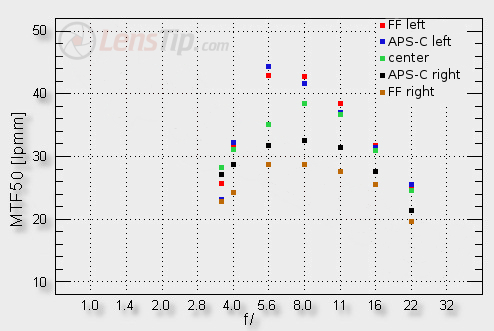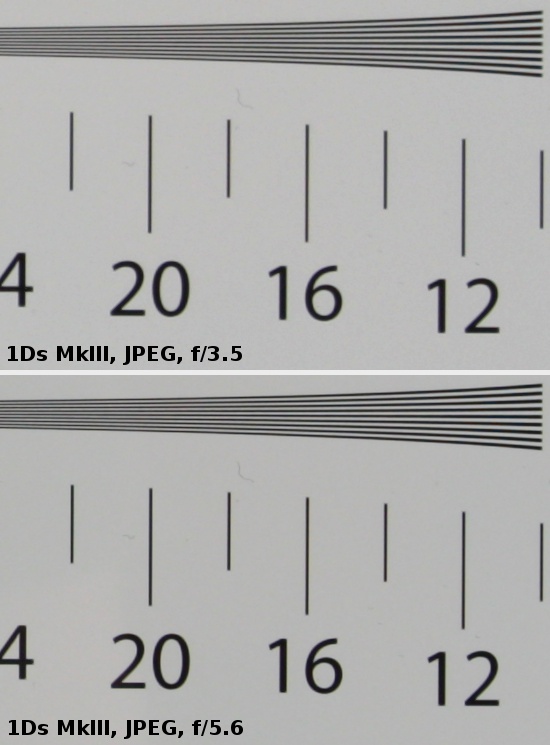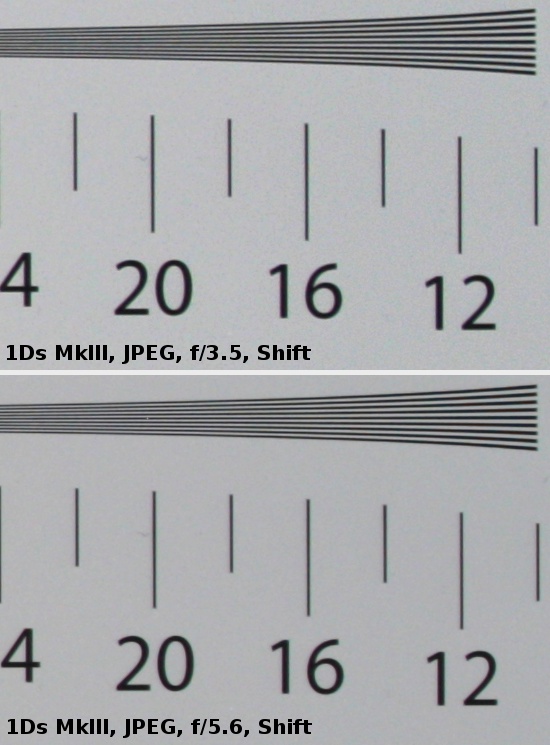Samyang T-S 24 mm f/3.5 ED AS UMC
4. Image resolution
How the tested lens compares here? Let’s glance at the graph below, with the results in the frame centre, on the edge of the APS-C sensor and full frame. It’s worth noticing that these are results reached in normal mode, with all tilts and shifts set at zero.

Please Support UsIf you enjoy our reviews and articles, and you want us to continue our work please, support our website by donating through PayPal. The funds are going to be used for paying our editorial team, renting servers, and equipping our testing studio; only that way we will be able to continue providing you interesting content for free. |
- - - - - - - - - - - - - - - - - - - - - - - - - - - - - - - - - - - - - - - - - - - - - - - -
It should be clearly stated that we didn’t expect any resolution records here and it is connected with the aperture fastness, offered by the tested lens. In the f/3.5-5.6 range we are still near enough the maximum relative aperture to feel the influence of different optical aberrations. By f/8- f/11 the lens is stopped down sufficiently to limit those but the diffraction makes itself felt, not allowing it to spread its metaphorical wings.
Taking all this into account, the results should be considered very good, perhaps even splendid. In the frame centre and at the maximum relative aperture the image is fully useful and, by f/4.0, even good. The image quality is beyond reproach by f/5.6 and f/8.0.
The situation on the edge of the APS-C/DX sensor is not a reason to complain either. Of course the results are not as high as in the frame centre for obvious reasons but still they can be considered as very good and, what’s more important, fully useful in the wide range of apertures, from f/3.5 to f/16.
The situation changes a bit on the edge of very demanding full frame. Here the MTFs registered by f/3.5 and f/4.0 are below the decency level. From f/5.6 onwards the image becomes fully acceptable though and by f/8 and f/11 you can consider it to be of good quality.
To sum up the Samyang company once again proved that their optics specialists are able to do a great job, designing even very demanding and complex instruments.
If it was a typical test this chapter would end in this place. As we deal with a special instrument, it will get a different treatment. We didn’t fail to check how the lens performs when its optical axis is maximally shifted. In order to do that we set the shift value at +12 units to the left and we conducted our standard resolution measurement procedure. The results are presented below, in a form of a graph.

The particular colours show curves we got for different places in the frame: red on the left edge of full frame, blue on the left edge of the APS-C/DX, green in the frame centre, black on the right edge of the APS-C/DX and brown on the right edge of full frame.
As you can notice after applying a shift the usefulness level wasn’t exceeded anywhere within the frame at the maximum relative aperture. A slight stopping down of the aperture to the value of f/4.0 makes the image useful in the left part of the photo and in the centre. By f/5.6 and f/8.0 the left part of the frame provides a great image quality but the centre suffers from pronounced astigmatism so the MTFs are there distinctly below 40 lpmm. The right part of the frame doesn’t impress with its resolution. The right edge of full frame doesn’t provide a good image quality at any aperture value.
We didn’t try to experiment with tilts or combining shifts and tilts here because it seemed pointless. Those operations cause such an ‘explosion’ of off-axis aberrations that speaking about image sharpness in the majority of the frame area is simply a misunderstanding. Of course, in the case of this lens it should be considered a feature, not a flaw.
At the end we show some crops of our test scene photos, taken from JPEG files which were saved along with RAW files. The crops are taken from an area near frame centre (to be absolutely honest a bit to the right from the centre) and they are presented both for the normal, zero shift mode and for the shift to the extreme left.
 |
 |






